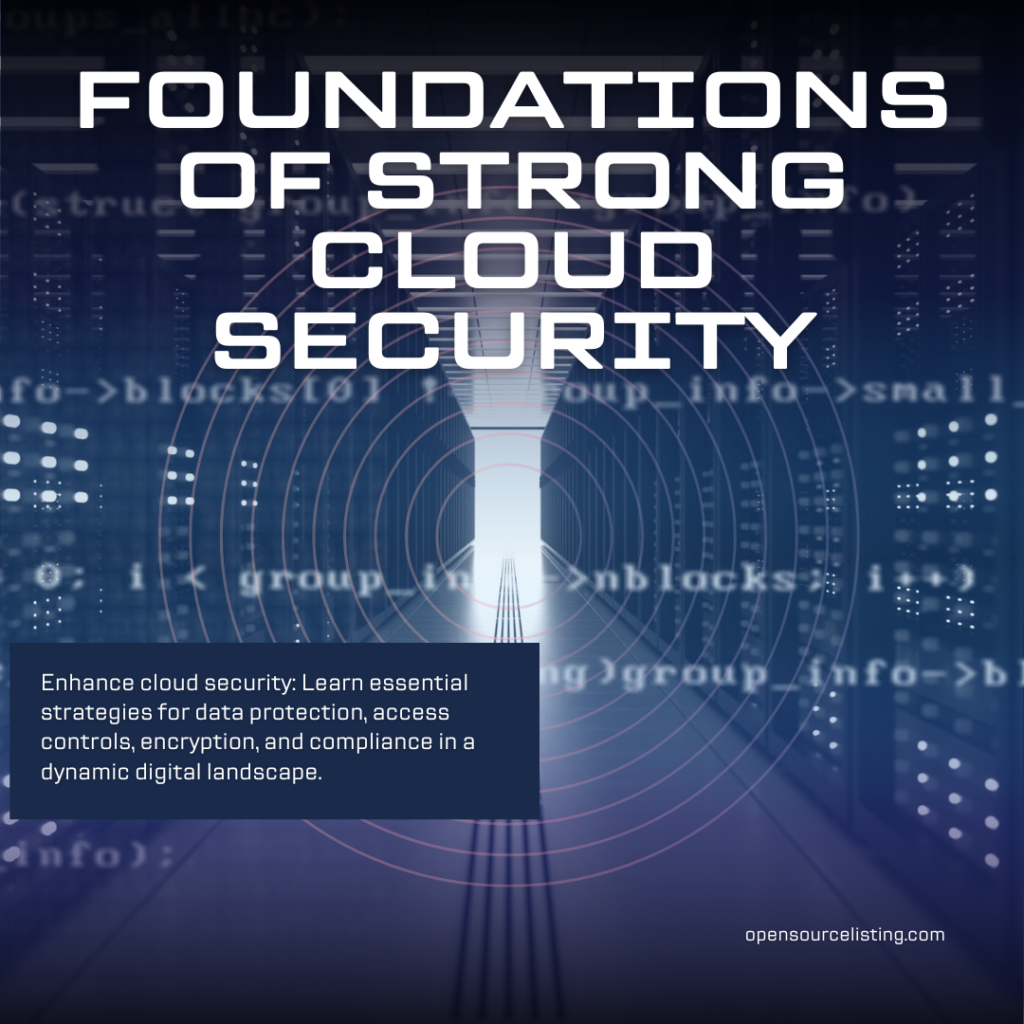Foundations of Strong Cloud Security
Foundations of Strong Cloud Security is a great choice! It conveys the idea that these pillars are the fundamental building blocks upon which robust cloud security is established. It’s clear and concise, effectively capturing the essence of the topic.

Foundations of Strong Cloud Security delves into the essential principles and components that collectively establish a robust and reliable security framework for cloud-based systems. Each pillar represents a critical aspect that contributes to overall security resilience, ensuring the protection of data, applications, and infrastructure in cloud environments. Let’s break down the concept in more detail:
1. Identity and Access Management (IAM)
This pillar emphasizes the importance of managing and controlling user identities and their access to resources within the cloud. It involves authentication, authorization, and role-based access control to ensure that only authorized individuals can access specific data and services.
2. Data Encryption and Privacy
Data encryption ensures that sensitive information remains confidential even if unauthorized access occurs. This pillar focuses on encrypting data both in transit and at rest within the cloud infrastructure, safeguarding it from potential breaches or leaks.
3. Network Security and Isolation
Network security involves isolating cloud resources from external threats and unauthorized access. By implementing network security measures such as firewalls, intrusion detection systems, and micro-segmentation, organizations can create a secure environment for their cloud-based assets.
4. Compliance and Regulatory Alignment
This pillar addresses the need to align cloud security practices with industry regulations and compliance standards. It ensures that organizations adhere to specific legal and regulatory requirements, preventing potential legal and financial repercussions.
5. Incident Response and Recovery
Even with strong preventive measures, security incidents can occur. This pillar focuses on preparing for and responding to security breaches effectively. It includes developing incident response plans, monitoring for anomalies, and establishing procedures for swift recovery.
6. Continuous Monitoring and Auditing
The final pillar emphasizes the importance of continuous monitoring and auditing of cloud environments. Regularly assessing the security posture helps identify vulnerabilities, unusual activities, and potential risks, allowing organizations to take proactive measures to maintain a secure environment.
By understanding and implementing these six pillars, organizations can establish a robust foundation for their cloud security strategy. This approach helps to mitigate risks, build user trust, and ensure the confidentiality, integrity, and availability of their cloud-based assets and services.
Conclusions
In the dynamic landscape of cloud computing, establishing a robust security foundation is paramount. Through a multifaceted approach encompassing thorough risk assessment, vigilant identity and access management, robust encryption protocols, continuous monitoring, well-defined incident response procedures, regulatory compliance adherence, comprehensive employee training, regular patch management, and a focus on secure development practices, organizations can forge a resilient defense against evolving cyber threats. This holistic strategy, coupled with prudent third-party oversight, forms the bedrock of a secure cloud environment, ensuring the integrity, availability, and confidentiality of data and services while fostering a culture of proactive security awareness.














